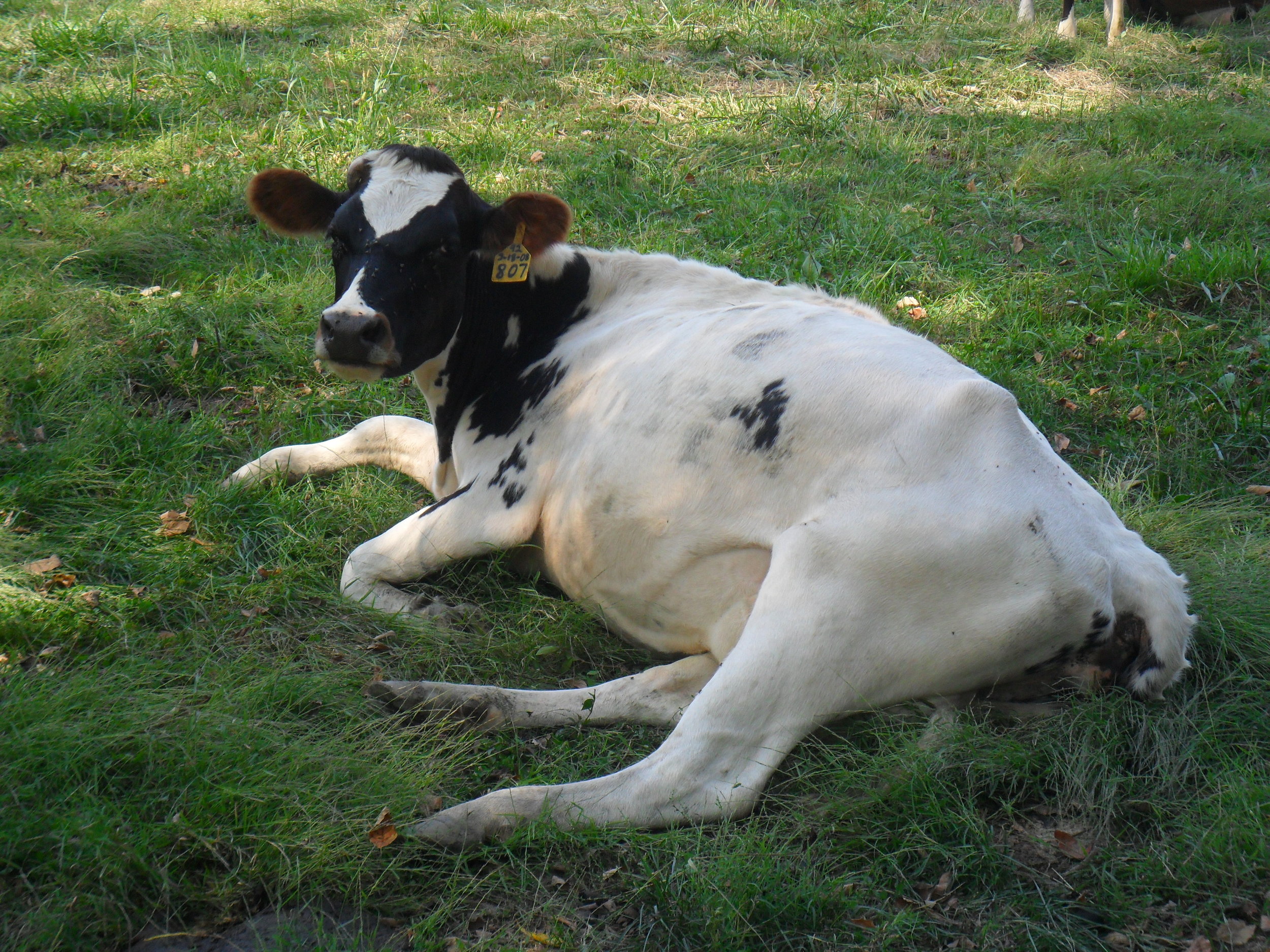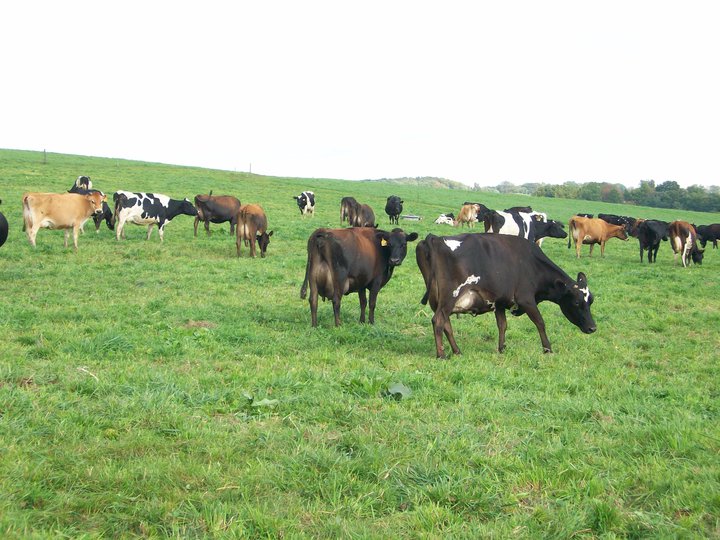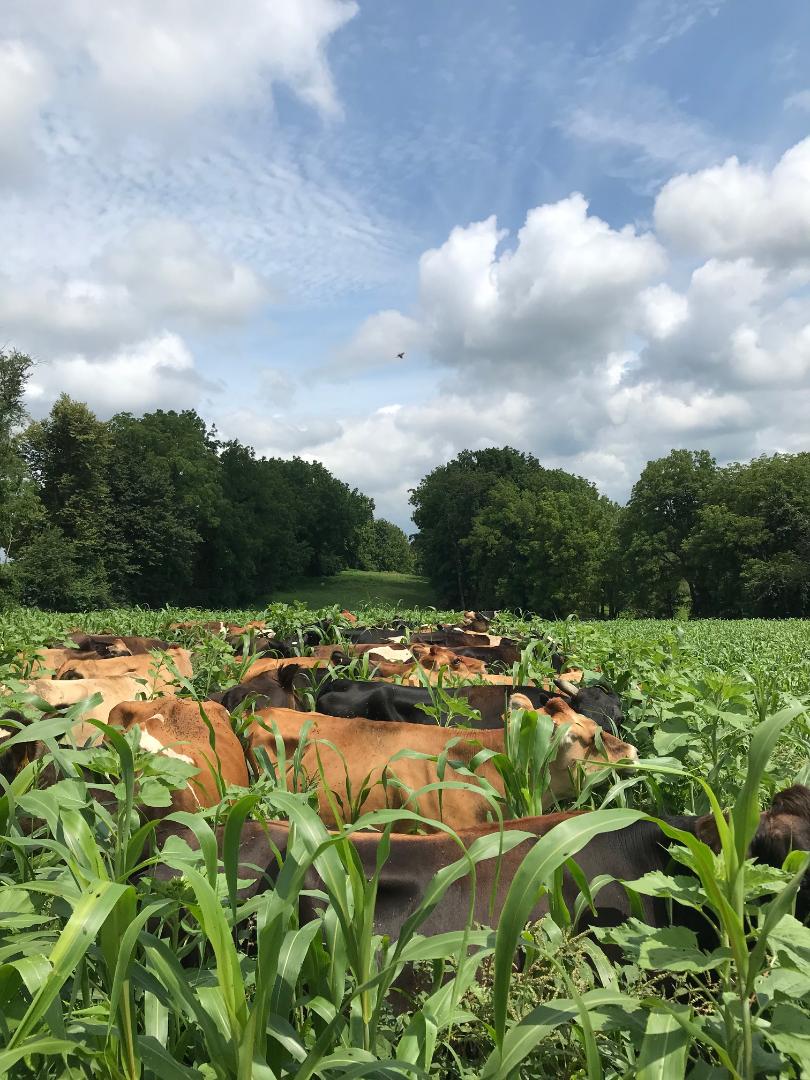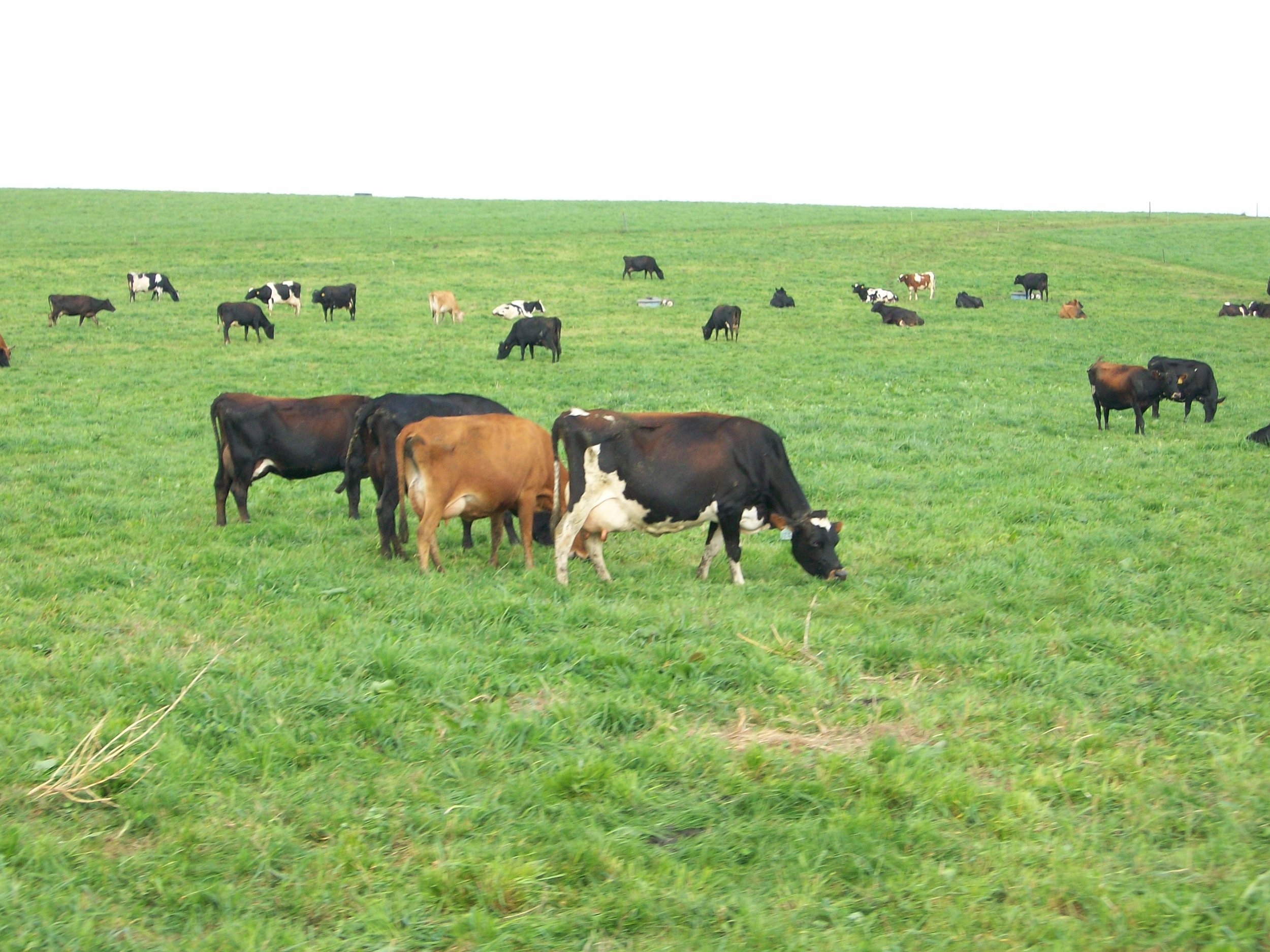
Why Seek Certified Organic?
A step above
Whenever a new market opens and grows rapidly (such as how organically-grown food has recently), you need standards to maintain the product label integrity. It does not do the consumer any good when a product is called chemical fertilizers.
In 1990, the federal government passed the Organic Food Production Act which established the National Organic Systems Board to set standards on the production of implementation period so by October 2002 anything that was labeled "organic" must follow strict guidelines.
There is a long list of dos and don'ts that we follow; including maintaining a 25’ border around our property where it adjoins with non-organic land, using approved cleaning materials, using non-treated, non-genetically modified seed, checking the list of approved substances when treating cattle health problems, not using pressure-treated lumber where animals have access, not using any chemical pesticides, fertilizers, growth hormones, etc. The list goes on and we need to keep detailed records of these things for the inspectors, which includes the new pasture rules that require that cows eat a minimum of 30% of their feed intake from pasture during their growing period.
These are all excellent rules that maintain the integrity of the “USDA certified organic” label. Unfortunately, producers calling their products "organic" that are not going through the certification route meaning they are not following all the organic rules. We feel the need to call our products “certified organic” because we are certified through Pennsylvania Certified Organic (PCO) that we follow all the USDA rules and procedures.
Why Drink Grass-Fed Certified Organic Raw Milk
Healthier, more Nutritious, and Safe
Raw milk is unprocessed, right from-the-cow the way God created it to be consumed (as long as the cows are grass-fed and certified organic). Our milk is passed through a filter and chilled down to 38 deg. F within 2 hours of the milking process. The milk is tested regularly for bacteria and meets all the same standards as pasteurized milk. All of the milk’s enzymes, vitamins, minerals, proteins, carbohydrates, and fats are in bioactive forms and combinations for optimum assimilation and utilization. Pasteurization destroys many nutrients and immune-enhancing components. Vitamin A is degraded, B6 and B12 are basically destroyed and the beneficial bacteria and immunoglobulins are also killed.
Finding grass-fed milk is important because microorganisms in the cow’s rumen produce energy nutrients, Vitamin K, B-complex vitamins, and amino acids essential for making proteins from green grass. Vitamins A and D are highest when cows are getting fresh, green grass, sunshine and are not fed any soy or cottonseed. Conjugated Linoleic Acid (CLA) in milk fat is 500% higher in grass-fed cows than in cows fed typical dairy diets. Omega 3 fatty acids and beta-carotene are twice as high in milk from grass-fed cows.
Finding certified organic milk is important because the cows do not have any antibiotic-resistant bacteria that could be passed on to humans through the milk. You are assured that no synthetic growth hormones have been fed to the cattle that will be passed through the milk or meat. These synthetic hormones have been linked to earlier puberty dates in children.
We have multiple testimonials from people who are “lactose intolerant” who have no problems drinking our milk but could not tolerate even a sip of store-bought pasteurized milk.
See www.realmilk.com or www.raw-milk-facts.com for more information.






